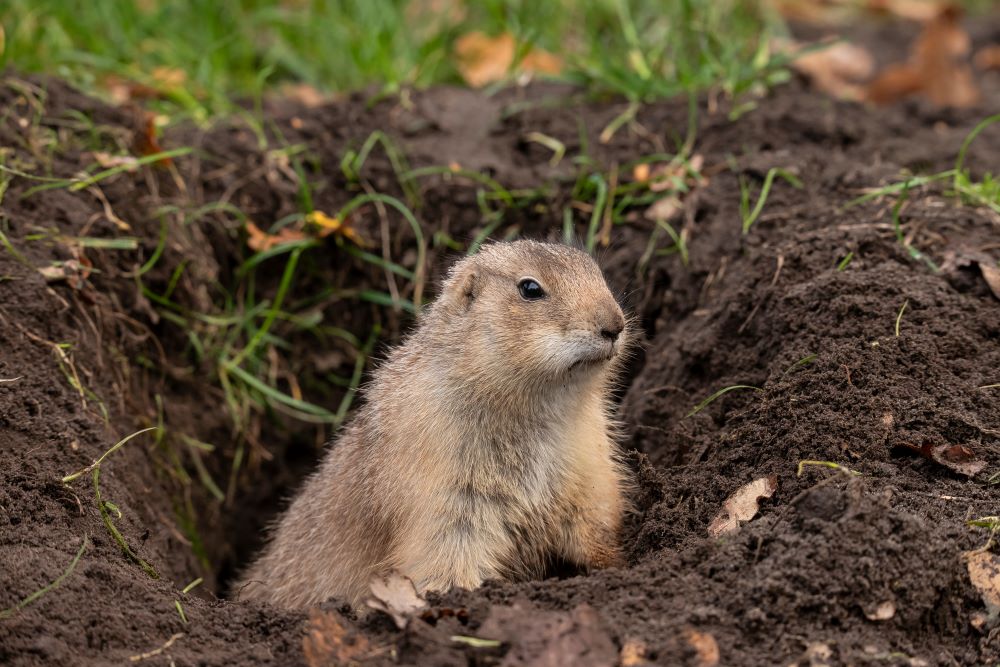
Gophers are fascinating creatures that have managed to capture the curiosity of both nature enthusiasts and homeowners alike. With their ability to create elaborate burrow systems, gophers have become notorious for their impact on landscapes and gardens. Understanding the secret world of gopher holes is crucial in order to effectively manage and control these burrowing rodents.
The importance of understanding gopher holes
Gopher holes may seem like a minor inconvenience, but they can have significant consequences for both residential and commercial properties. The intricate tunnels created by gophers can undermine the structural integrity of buildings, sidewalks, and even roadways. This can lead to costly repairs and potential safety hazards. By gaining a deeper understanding of gopher holes, homeowners and property managers can take proactive measures to prevent and manage these burrows.
How gophers create their burrows
Gophers are master excavators, capable of creating complex underground networks that extend for several meters. These burrows serve as their homes, providing protection from predators and adverse weather conditions. Gophers use their powerful front legs and sharp claws to dig through soil, creating tunnels and chambers. As they dig, they push the soil to the surface, creating mounds that are a telltale sign of gopher activity. It is fascinating to note that a single gopher can create an extensive network of burrows, with multiple entrances and exits.
The anatomy of a gopher hole
A typical gopher hole consists of several components that work together to create a functional living space for these rodents. The entrance hole is typically surrounded by a mound of loose soil, which serves as a protective barrier against predators. From the entrance hole, a main tunnel leads to a central chamber, where the gopher resides. This chamber is where the gopher rests, stores food, and raises its young. From the central chamber, secondary tunnels branch out, connecting to feeding areas and additional chambers. These secondary tunnels can extend several feet from the main tunnel, creating a complex network of burrows.
Signs of gopher activity and how to identify their burrows
Identifying gopher activity and their burrows is crucial in order to effectively manage and control these rodents. The most obvious sign of gopher activity is the presence of fresh mounds of soil, often accompanied by a visible hole. These mounds are created as the gopher pushes soil to the surface while excavating its burrow. Additionally, gophers will leave behind distinctive gnaw marks on vegetation, such as trees and shrubs. By closely inspecting these signs, homeowners can determine the extent of gopher activity and take appropriate measures to address the issue.
The impact of gopher holes on landscapes and gardens
Gopher holes can have a significant impact on landscapes and gardens. The extensive burrow systems created by gophers can damage plant roots, leading to the death of vegetation. This can be particularly devastating for farmers and gardeners who rely on their crops for sustenance or income. Additionally, the mounds of loose soil created by gophers can be unsightly and pose a tripping hazard. Understanding the impact of gopher holes is essential in order to protect and preserve the beauty and functionality of outdoor spaces.
Methods for preventing and managing gopher holes
There are several methods available for preventing and managing gopher holes. One effective approach is to create physical barriers around vulnerable areas, such as gardens or flower beds. These barriers can be made from materials like wire mesh or hardware cloth, which prevent gophers from accessing the area. Another method is the use of sonic devices that emit high-frequency sounds, which are unpleasant to gophers and deter them from burrowing. Additionally, trapping and removal techniques can be employed to physically remove gophers from the property.
Natural and humane ways to remove gophers and fill their burrows
For those who prefer natural and humane methods, there are alternatives to traditional trapping and removal techniques. One option is the use of castor oil-based repellents, which create an unpleasant taste and smell for gophers, deterring them from the area. Another natural approach is the introduction of predators, such as barn owls or snakes, which feed on gophers. This can help control the population and reduce gopher activity. Once the gophers have been removed, it is important to fill their burrows to prevent other rodents from taking their place. This can be done using soil or other materials that are compacted to ensure stability.
The role of professionals in gopher hole control
While there are many DIY methods for gopher hole control, sometimes it is best to seek the assistance of professionals. Pest control experts have the knowledge and experience to effectively manage and control gopher infestations. They are equipped with specialized tools and techniques that can ensure the complete eradication of gophers from the property. By enlisting the help of professionals, homeowners and property managers can have peace of mind knowing their gopher problem is being handled by experts.
Conclusion
Gopher holes may seem like a small inconvenience, but they can have a significant impact on landscapes and gardens. Understanding the secret world of gopher holes is crucial in order to effectively manage and control these burrowing rodents. By recognizing the signs of gopher activity, implementing preventive measures, and seeking professional assistance when needed, homeowners and property managers can protect their yards and ensure the safety and functionality of their outdoor spaces. Reach out to Recon Pest Services today to get started on effective gopher control and protect your yard!

